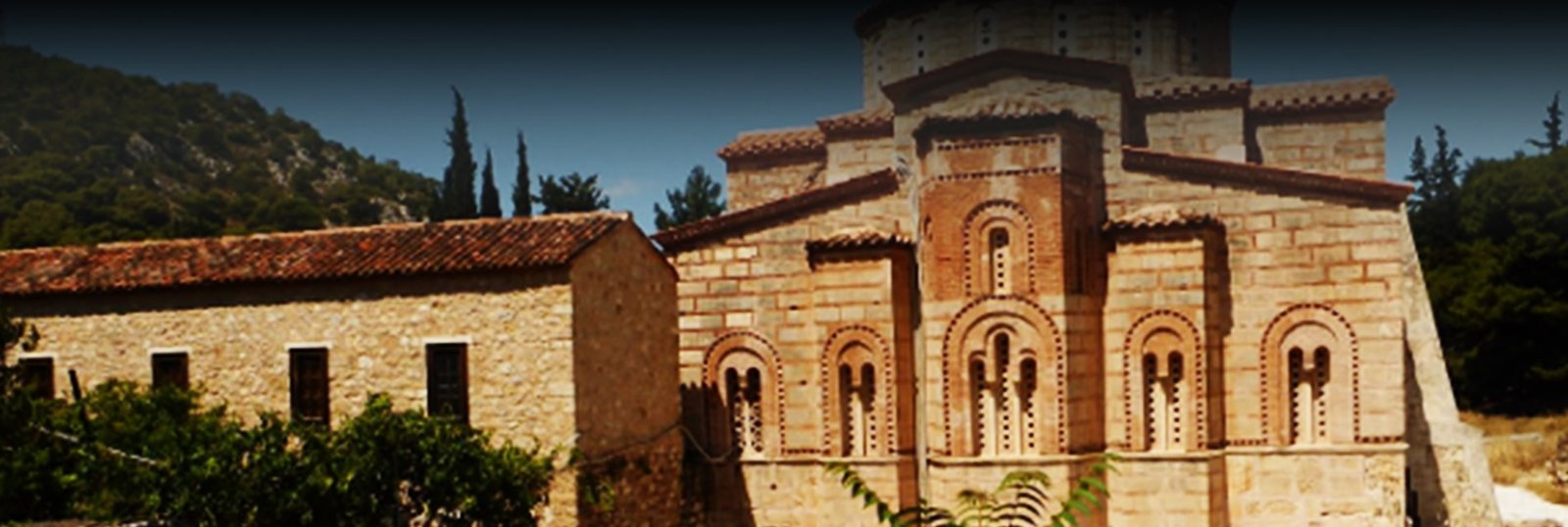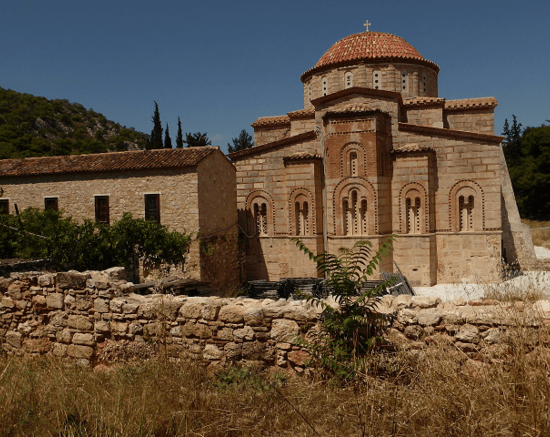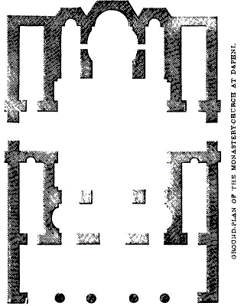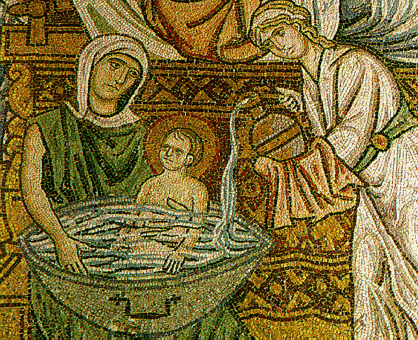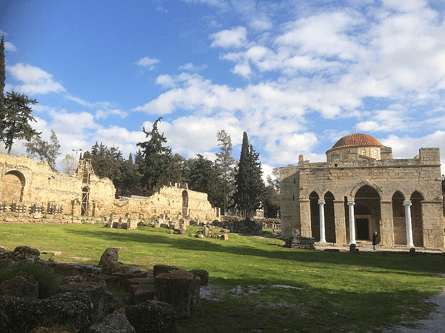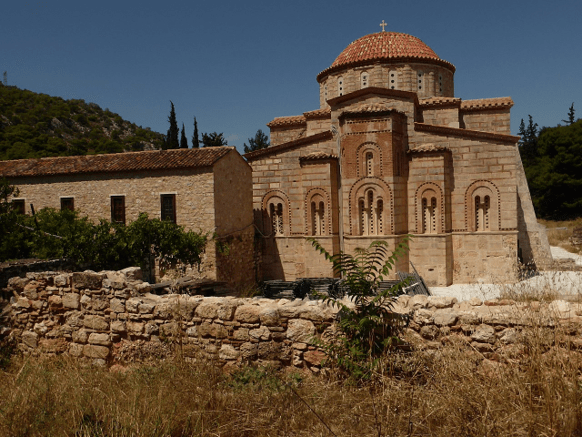Daphni Monastery
per person
The Daphni Monastery lies in Chaidari along the route of the ancient Hiera Odos to Eleusis.
It stands on a site where in the antiquity was the sanctuary of Apollo Daphnaios; the latter was destroyed in 395 when the Goths invaded Attica. The only still visible remain in situ is an Ionic column in the medieval narthex. According to an opinion, in the 6th century a basilica was erected on the same place which was later abandoned. However, this opinion has been lately strongly disputed. In the 11th century (around 1080), the still existing church was erected and decorated with magnificent mosaics. After the Fourth Crusade, the area was awarded to Othon de la Roche, the Lord of Athens whereas the monastery was given to the Cistercian monks from Belleveaux. The Western monks remained in the monastery until 1458, when Athens was captured by the Turks. After that date, it was reoccupied by Orthodox monks. The building suffered severe damages 1889 and 1897 by earthquakes.
FORMAL ANALYSIS
The preserved katholikon (main monastic church) is a cross in-square church of the octagonal type with a broad and high dome. It consists of a narthex while an exonarthex was build in the 12th century. In the 13th century was constructed the porch in the west façade of the narthex with obvious western influences. During the Cistercian phase, in the narthex and the exonarthex was added a second floor. It was probably used as a library. Finally, a crypt under the narthex there is a crypt
The masonry does not have any peculiarities; on the contrary it is simple cloisonné with few decorative elements.
The monastery was protected by walls and the main entrance was to the south. The cells of the monks were located to the north and western side, and they were two-storey buildings. Also the trapeza (refectory) has been identified with a building north of the katholikon which had wall paintings.
The mosaics at Dafni are dated in the 11th century and are of unique quality and elegance. The depicted scenes relate to the iconographic circles of the Life of Christ and the Virgin; figures such as archangels, prophets, saints, martyrs, bishops as well as scenes are put on specific places following a specific arrangement in the dome, the cross-arms, the sanctuary and the eso-narthex.
On the lower level of the walls were to be found marble slabs which unfortunately were removed and replaced by wall paintings in the 17th century.
EKATERINI MITSIOU
- DAPHNI MONASTERY © FOTO: Wikipedia Commons
- DAPHNI MONASTERY © PLAN: John M. Neale, A history of the Holy Eastern Church
- MONASTERY OF DAFNI, INTERIOR, YARD © FOT. WIKIPEDIA COMMONS
- MONASTIC CHURCH OF DAFNI (INTERIOR) © FOT. WIKIPEDIA COMMONS
- MOSAIC DEPICTING THE BATHING OF NEW-BORN VIRGIN MARY © FOT. Wikimedia commons
- MONASTIC CHURCH OF DAFNI (EXTERIOR) WITH THE WESTERN ADDITIONS (PORCH) © FOT. Sp!ros (talk | contribs)
Información de la localidad
Daphni Monastery
| Other monuments and places to visit | Other monuments id Attika such as the monastery of Kaisariani |
| Natural Heritage | |
| Historical Recreations | |
| Festivals of Tourist Interest | |
| Fairs | |
| Tourist Office | |
| Specialized Guides | |
| Guided visits | |
| Accommodations | Various hotels around the monastery |
| Restaurants | Many restaurants nearby |
| Craft | |
| Bibliography | |
| Videos | |
| Website |
| Monument or place to visit | Daphni Monastery |
| Style | Remains of the 11th century, 12th, 13th and 18th centuries |
| Type | Monastic architecture |
| Epoch | 11th century, 12th, 13th and 18th centuries |
| State of conservation | Good conditions. |
| Degree of legal protection | Designated UNESCO World Heritage Sites |
| Mailing address | Iera Odos, Chaidari 124 61, Greece |
| Coordinates GPS | 38° 00′ 47″ N, 23° 38′ 09″ O |
| Property, dependency | Ephorate of Antiquities of West Attika |
| Possibility of visits by the general public or only specialists | General public visits |
| Conservation needs | Yes |
| Visiting hours and conditions | Wednesday, Thursday, Friday, Saturday and Sunday 08:30 - 15:30. Monday, Tuesday closed. |
| Ticket amount | Free admission |
| Research work in progress | Archaeological excavations (1892, 1936-1939) and restoration and enhancement of the complex (1955-1957) and after an earthquake in 1999 |
| Accessibility | Very good |
| Signaling if it is registered on the route | Not registered yet. |
| Bibliography | -Helen D. Kyriacopoulou,, et al., The Daphni Monastery: History, Architecture, Mosaics. Athens 1956 - Robin Cormack,. Byzantine Art. Oxford 2002. -Christopher Entwistle and Liz James, New Light on Old Glass: Recent Research on Byzantine Mosaics and Glass. London 2013 |
| Videos | Youtube Youtube |
| Information websites | odysseus.culture.gr wikipedia.org thebyzantinelegacy.com |
| Location | Chaidari, Attika, Greece |


